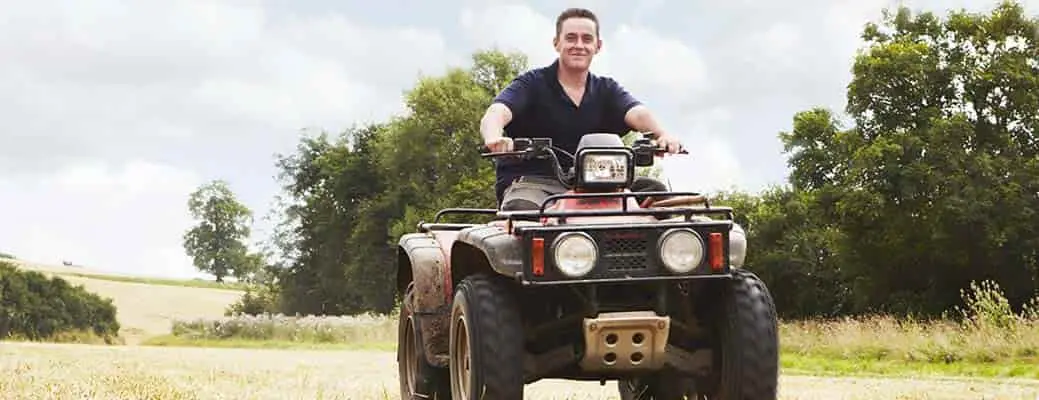5 Tips for ATV Safety on the Farm


All Terrain Vehicles (ATVs) are important tools for work on the farm, assisting in a variety of tasks such as checking on or herding livestock and hauling small loads. However, they can also be incredibly dangerous. Here’s how to practice ATV safety on the farm.
One of the best ways to protect yourself from injuries is to wear appropriate gear. This includes an ATV-appropriate helmet (not a bike helmet), goggles, thick clothing that isn’t baggy enough to get caught in the ATV or on environmental objects, gloves and sturdy footwear with the laces secured. These things can help keep you from experiencing minor injuries, such as scratches and burns, as well as significant injuries and death.
Your farm ATV should also be “wearing” appropriate safety gear, such as a visibility flag and lights. This is especially important when ATVs may be used in areas where other vehicles are also being operated.
All potential riders should enroll in ATV safety training to know how to appropriately use an ATV. While it may seem easy or second-nature, ensuring that everyone feels comfortable operating the vehicle is critical.
You should also complete a checklist before you operate the ATV, including checking oil and gas levels; gauging tire pressure; verifying that the lights are working; ensuring footpegs, wheels and rack are properly tightened; checking that the throttle moves smoothly and confirming that all lines and cables are intact.
Most ATV accidents on farms are collisions with objects or rollovers, some of which can be prevented with diligent and careful observation. You should always limit your speed based on the terrain and visibility conditions.
Hidden objects can easily cause an accident; it’s important to be aware of hazards in the area, such as downed fences, culverts or stumps.
Crossing roads also requires you to be diligent, coming to a complete stop on the shoulder and crossing where visibility from both directions is good.
Although ATVs have a seat that looks like it can fit multiple people, they are made for one rider. The long seat is to allow the rider to shift their weight properly when turning. Because weight distribution is critical to safely operating ATVs, you should also be cautious when using ATVs to haul anything.
Before loading anything onto an ATV, check the manufacturer’s weight limit. Your ATV + rider + load should not exceed that limit. Before operating, you should ensure that the load is balanced and secure it so the machine doesn’t pull or roll once you get going.
When anyone is working alone, you should establish check-in procedures and be aware of where others are working, what they are doing, when they should be back, alternate plans in case of bad weather and a contact method. Take these check-ins seriously; if someone is injured and unable to communicate that they need assistance, finding them after a missed check-in could be lifesaving.
ATV safety is an important part of protecting you and everyone on your ag operation. Another important piece is ensuring that you have the right coverage for your business. Talk with a Farm Bureau agent about coverage options for your situation.